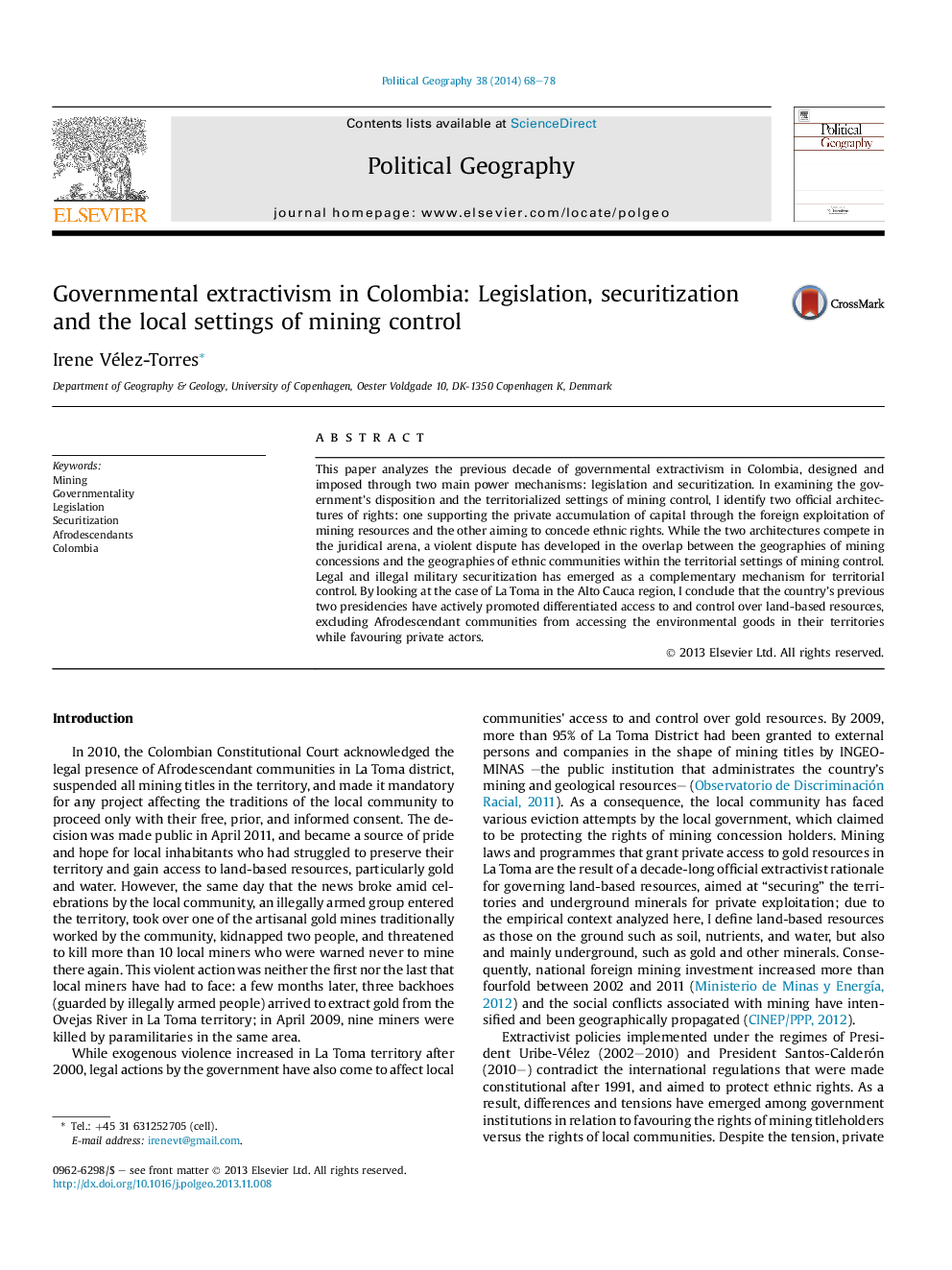| کد مقاله | کد نشریه | سال انتشار | مقاله انگلیسی | نسخه تمام متن |
|---|---|---|---|---|
| 1061924 | 1485594 | 2014 | 11 صفحه PDF | دانلود رایگان |
• One decade of the politics of extractivism in Colombia is examined.
• Governmentality and the colonial experience are the main conceptual frameworks of analysis.
• Legislation and securitization are the main power mechanisms for resource control.
• Competition between two juridical architectures of rights has emerged.
• An ethnicized unequal control over underground resources is analyzed from a structural and territorial perspective.
This paper analyzes the previous decade of governmental extractivism in Colombia, designed and imposed through two main power mechanisms: legislation and securitization. In examining the government's disposition and the territorialized settings of mining control, I identify two official architectures of rights: one supporting the private accumulation of capital through the foreign exploitation of mining resources and the other aiming to concede ethnic rights. While the two architectures compete in the juridical arena, a violent dispute has developed in the overlap between the geographies of mining concessions and the geographies of ethnic communities within the territorial settings of mining control. Legal and illegal military securitization has emerged as a complementary mechanism for territorial control. By looking at the case of La Toma in the Alto Cauca region, I conclude that the country's previous two presidencies have actively promoted differentiated access to and control over land-based resources, excluding Afrodescendant communities from accessing the environmental goods in their territories while favouring private actors.
Journal: Political Geography - Volume 38, January 2014, Pages 68–78
